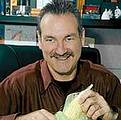 美國華盛頓大學聖路易分校領導的科學團隊,28日公開世界第一份完整的玉米基因地圖。而研究人員也已針對玉米基因擬出工作計畫,欲投入更多努力來研發玉米品種的多樣性,以滿足人類對於食物、家畜飼料及燃料等每日益增的需求。
美國華盛頓大學聖路易分校領導的科學團隊,28日公開世界第一份完整的玉米基因地圖。而研究人員也已針對玉米基因擬出工作計畫,欲投入更多努力來研發玉米品種的多樣性,以滿足人類對於食物、家畜飼料及燃料等每日益增的需求。
這份基因藍圖是由該計畫的領導人,同時也是華盛頓大學基因定序中心主任的威爾森博士(Richard K. Wilson, Ph.D.),於28日在華盛頓舉辦的第50屆玉米基因研討會上發布。威爾森表示,「現在有了基因藍圖,科學家就能夠精確且有效率的從玉米基因研究中,找出方法來改良培育技術,還能進一步提升產量及抗病、抗旱的能力。」
隨著先前稻米的基因序列被解讀出後,玉米是全球第二種被人類解讀出基因序列的農作物。而藉由這樣的發現,科學家將能從兩種作物間,找出是否有相似或相異之處。
科學家發現,玉米的基因密碼包含了20億組「DNA片段」──由大寫字母T、C、G、A代表的化學組成,和人類29億組字母長度的基因序列相近。相對來說,稻米的基因定序較短,其只包含大約4.3億組DNA片段。
對威爾森的研究團隊而言,如何將字母序列排列組合是一項浩大又艱難的挑戰,這不單是因為玉米基因的數量,也關乎於玉米複雜的基因組合。大體而言,玉米有50,000到60,000個基因,大約是人類基因的2倍。
威爾森解釋道,「將玉米基因排列組合就像是在拼湊1000片的拼圖,但圖中卻是藍色的天、藍色的海,點綴著幾艘漂浮在水平線上的小帆船。具體而言,也就是沒有任何具指標性的東西能幫助我們讓基因排到適當的位置。」
 「對美國而言,玉米在經濟上極具重要性。」國家科學基金會(National Science Foundation)主任亞頓(Arden L. Bement Jr.)表示,「玉米基因的初稿序列一旦完成,不僅是科學上一大進步,也能帶動整體農業社區及經濟的成長。」
「對美國而言,玉米在經濟上極具重要性。」國家科學基金會(National Science Foundation)主任亞頓(Arden L. Bement Jr.)表示,「玉米基因的初稿序列一旦完成,不僅是科學上一大進步,也能帶動整體農業社區及經濟的成長。」
在科學團隊努力不懈的研究下,基因序列的資訊已公開於基因資料庫(GenBank)供各國科學家瀏覽。此外,在maizesequence.org中也提供了相關資訊。
目前出爐的基因序列初稿,已包含了95%的玉米基因,而在接下來幾年,科學家將持續運用研經費,讓基因定序的成果更趨完善。威爾森解釋說,「儘管仍缺少一些片段,初稿序列還是可以應用。實際上,所有資訊都是公開的,我們以後可能會對基因序列稍微做一些修正,但並不預期會有什麼大的改變。」
The world's first map of the corn genome was unveiled today by a team of scientists led by Washington University in St. Louis. The researchers have completed a working draft of the corn genome, which they say should accelerate efforts to develop better crop varieties to meet growing demands for food, livestock feed and fuel.
The genetic blueprint was announced today by the project's leader, Richard K. Wilson, Ph.D., director of Washington University's Genome Sequencing Center, at the 50th Annual Maize Genetics Conference in Washington, DC.
Wilson said. "Scientists now will be able to accurately and efficiently probe the corn genome to find ways to improve breeding and subsequently increase crop yields and resistance to drought and disease."
Corn is only the second crop after rice to have its genome sequenced, and scientists will now be able to look for genetic similarities and differences between the crops.
The genetic code of corn consists of two billion bases of DNA, the chemical units that are represented by the letters T, C, G and A, making it similar in size to the human genome, which is 2.9 billion letters long. By comparison, the rice genome is far smaller, containing about 430 million bases.
The challenge for Wilson and his colleagues was to string together the order of the letters, an immense and daunting task both because of the corn genome's size and its complex genetic arrangements. Corn has 50,000 to 60,000 genes, roughly double the number of human genes.
"Sequencing the corn genome was like putting together a 1,000 piece jigsaw puzzle with lots of blue sky and blue water, with only a few small sailboats on the horizon," Wilson explains. "There were not a lot of landmarks to help us fit the pieces of the genome together."
"Corn is one of the most economically important crops for our nation," says National Science Foundation Director Arden L. Bement Jr. "Completing this draft sequence of the corn genome constitutes a significant scientific advance and will foster growth of the agricultural community and the economy as a whole."
The team working on the endeavor has already made the sequencing information accessible to scientists worldwide by depositing it in GenBank, an online public DNA database. The genetic data is also available at maizesequence.org.
The draft covers about 95 percent of the corn genome, and scientists will spend the remaining year of the grant refining and finalizing the sequence. "Although it's still missing a few bits, the draft genome sequence is empowering," Wilson explains. "Virtually all the information is there, and while we may make some small modifications to the genetic sequence, we don't expect major changes."
全文及圖片詳見:ENS






